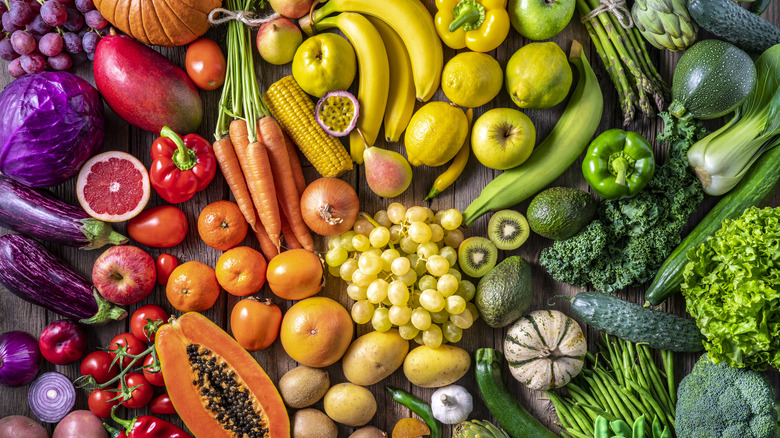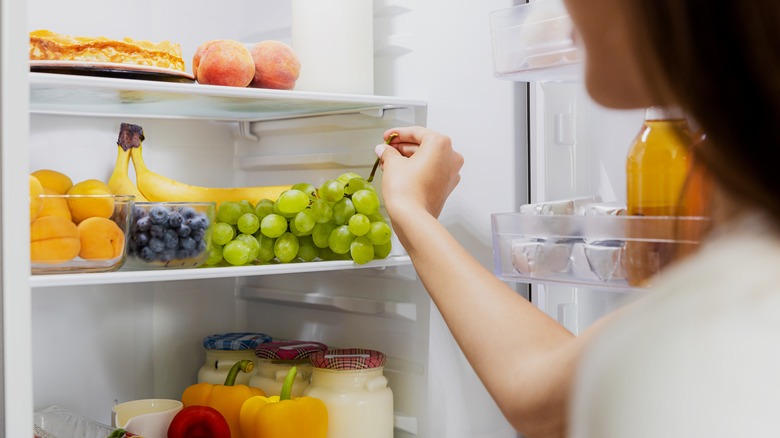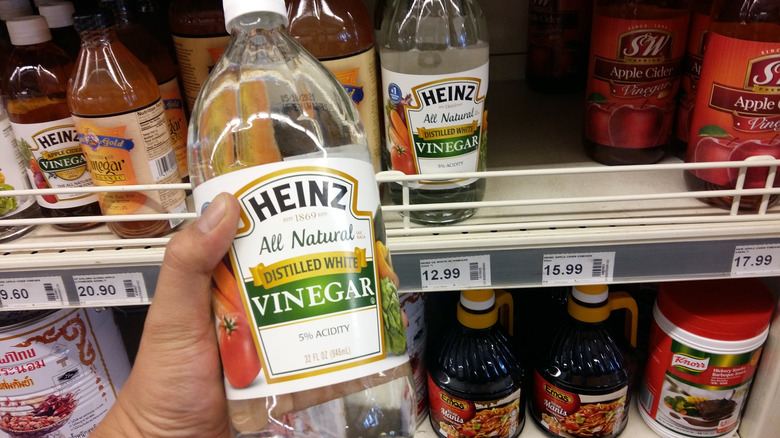The Vinegar Hack That Will Keep Your Produce Mold-Free
Moldy fruit and vegetables are an unwelcome surprise in the kitchen, but there's an easy and convenient way to deter mold on produce. Applying vinegar to the exterior of produce can greatly decrease the rate of mold growth and keep fruit and veggies fresher for longer. Some people swear by giving their produce a rinse in a vinegar solution after buying, which removes bacteria and chemicals while simultaneously fighting mold.
To make your own anti-mold solution, take three parts of water and one part of white vinegar and mix them in a bowl. Submerge fruit and vegetables in the solution and leave them there for about ten minutes. You can also move the produce around in the liquid to ensure fruits or veggies are fully covered. After ten minutes, take the produce and drain it well, then rinse thoroughly. Leave the produce out until it fully air dries, then store it as you normally would (preferably in a breathable container). Keep in mind that your method for storing produce can also affect mold growth.
Why do fruit and vegetables get moldy?
When conditions are right, microscopic mold spores can develop into the fuzzy, discolored patches you see on food. Mold requires an amenable temperature to grow, with 60 to 80 degrees being the ideal range for optimum growth, as per the NC Department of Health and Human Services. It also needs access to sustenance, meaning food and water. Fruits and vegetables are ideal in this regard, as they offer plenty of nutrition and moisture to enable mold to thrive. Keep in mind that some forms of mold can be dangerous if consumed. Also, mold spores penetrate deep inside food, so simply cutting off moldy sections isn't a good idea, shares Sciencing.
As for the length of time it takes for fruit and vegetables to develop mold, it all depends on the environment where they're stored, explains Moldli. When conditions are cooler or when produce is kept in a refrigerator, it can take weeks for mold to grow. Conversely, food can develop mold in one to two days in warm, humid environments. Fortunately, the mold-fighting properties of vinegar can extend the lifespan of your produce.
Why vinegar is effective against mold growth
Vinegar contains acetic acid, which is key to its effectiveness against mold. With a pH level of about 2.5, acetic acid deters fungal growth while also warding off bacteria. Determining a substance's pH level indicates how acidic or basic a substance is. The pH scale begins at 0, which means that a substance is highly acidic. The most basic substances have a pH of 14, while neutral substances, like water, have a pH of about 7.
While vinegar is only mildly acidic, it's effective against the majority of mold strains that can be found in average households. Scientific studies also back up vinegar's mold-fighting ability, as per a 2015 study published in the International Journal of Environmental Research and Public Health cites data that shows vinegar can effectively kill a few mold strains in a wide range of fruit, including apples, stone fruit, strawberries, and tomatoes. Based on this information, vinegar can be a real-life saver when it comes to fresh produce.


